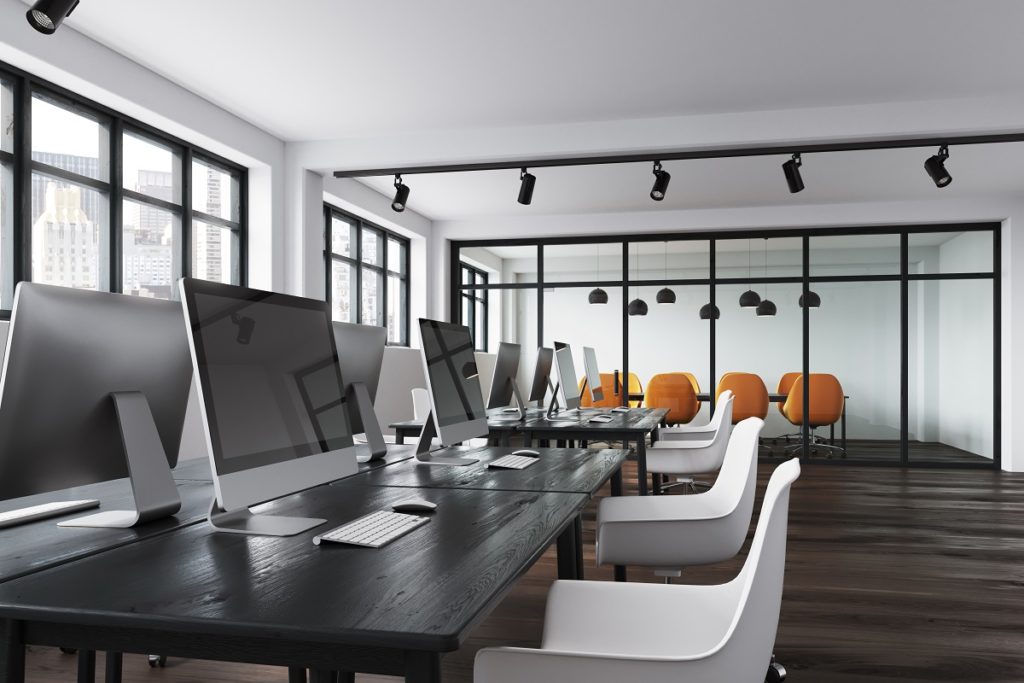The impact of COVID-19 will most likely be felt long after it has gone. The world of work, in particular, has taken a beating from the pandemic.
How will companies redesign their offices to take into account the current realities and to be prepared for future outbreaks? Below are some ideas.
Wider spaces in between
Not too long ago, it was common to see workers crammed into a single long desk while passing along a bowl of snacks to be shared. Such a set-up seems impossible nowadays.
It’s likely that most governments will continue enforcing social distancing protocols — specifically the six feet distance rule. And companies will surely want to be compliant with relevant guidelines to continue operating.
Spaced out desks and chairs could become more commonplace. Some companies may even be willing to invest in a retrofit. Corridors and doorways could be rebuilt to become wider. Department partitions could become more pronounced as well.
Improved design and sanitation of commercial restrooms
Desks and other office surfaces won’t be the only considerations when it comes to proper sanitation. Companies will also look to improve how common restrooms are designed and sanitized.
According to the Physics of Fluids, an academic journal, toilet flushing can propel virus particles a few feet above the toilet seat. This can make transmission more likely from cubicle to cubicle. As a result, restrooms that have open-top and open-bottom stalls can become particularly risky for people to use.
Companies would need to work with toilet and bidet manufacturers to design receptacles that can ensure minimal risk of transmission.
Additionally, cleaning staff would need to work around the clock to keep restrooms and bathrooms sparkling clean. Overall, cleaning and sanitation budgets could experience an increase.

The Rise of touchless interfaces
To ensure that surfaces don’t harbor virus particles in the first place, companies would need to invest in contactless technology. The latter will help workers minimize the frequency of touching doors, guard rails, walls and other areas of the office.
It may sound something straight out of science fiction movie, but this is nothing new. Automatic sliding doors, motion sensors, and facial recognition software are already present in several buildings.
However, the outbreak of COVID-19 will most likely ramp up adoption of these technologies. And more companies are likely to start allocating more resources to make this happen.
Augmented reality as the new normal
What does seem to take a page from science fiction is the concept of augmented reality (AR). Facebook has been making progress in a futuristic work set-up, which involves floating documents and screens.
The social network is also working on how to make people-to-people interactions more seamless in a virtual world through better hand tracking capabilities and more realistic avatars.
AR seems like a promising approach to improve communication between remote workers and office workers. Overall, it could help address the different challenges brought about by social distancing.
It remains to be seen whether or not more companies will be interested in investing in augmented reality. Bolder tech companies like Facebook will first have to lead the charge.



